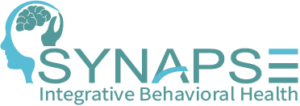FAQ
Most frequent questions and answers
TMS treatment is administered 5 times a week for 4-6 weeks (20-30 sessions). Each treatment time is around 20 minutes
No, TMS is not like ECT.
There are several key differences between these two treatments; For one, ECT relies on a heavy usage of electricity because most of it encircles the skull since electricity doesn’t want to penetrate the solid surface. The amount of electricity applied induces intentional seizures, whereas TMS therapy is not invasive and doesn’t run the risk of damaging the brain.
Patients undergoing ECT are given anesthesia so the seizures aren’t very visible.
However, in TMS therapy, no such seizures are necessary; magnetic pulses easily penetrate the skull without going very deep.
No, there is no memory loss known to correspond with TMS therapy.
Most insurances cover TMS. We obtain prior authorization from insurance before treatment.
- Patients who have undergone brain surgery and still have magnetic metals in the brain.
- Patients who have never responded to other depression treatments.
- Very elderly patients
- Patients who have seizures
No, TMS is an outpatient procedure. You can drive after the treatment session.




